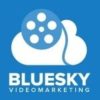
When designing a Google Ads campaign it’s useful to know how to construct the ad campaign for the best chance of success.
It’s no surprise that there’s a lot of advice out there from Google on how to do this – and there are some really useful tips in there.
This information is taken from an article on the Google Ads Help forum.
With 70% of YouTube viewers saying they have purchased a product after seeing it on YouTube it’s definitely worth considering a video advertising campaign for your product or service to help you drive traffic, leads and sales.
Sounds obvious right?
YouTube ads have always performed well in terms of reach and engagement metrics – but we all know that campaigns are very often judged by the return on investment they can deliver in terms of sales numbers.
Google suggests that you try YouTube Action Campaigns when this is the case.
Put simply, YouTube Action Campaigns place prominent calls to action on your video when it plays on YouTube but also across its partner sites, making it more likely that the viewer will take an action to visit your product page and buy your product.
A useful tip from Google Ads here is to experiment with creative variations when you launch your campaign – their suggestion is you use 5+ different variations of headlines and calls to action.
Adding sitelink extensions to your campaign is also proven to drive a better return on investment from your Google Ads campaign.
If you’re an ecommernce business, adding a product feed to your video ad campaign drives 60% more conversions according to data gathered across various Google ad campaigns in 2021.
The second tip they provide for success with your video advertising campaign is to ensure that you set up conversion tracking on your website.
If you’re an ecommernce business this is fairly straightforward – but if you’re in the B2B arena and a ‘conversion’ is counted as generating an enquiry it’s also relatively straightforward to ensure you’re able to track these.
Simply make sure you have a ‘thankyou’ page at a specific domain.
The image shows our ‘conversion’ page.
Marking this page as a ‘conversion’ in your ad campaign will ensure that when you’re checking your Google analytics you’ll have visibility of how many website visitors went on to submit an enquiry as the only people who will see the ‘thankyou’ page are those that have clicked ‘submit’ on the enquiry page.
In our experience of running YouTube ad campaigns with our customers, this is the tactic that is most likely to result in success when running conversion campaigns.
There are so many ways to ensure your product gets in front of the people most likely to convert as a result of the volume of data that Google has available on search behaviour.
Custom audiences, customer match and similar audiences are just 3 examples of this.
Data segments are also very useful – you can start to segment your audience based on the pages of your website that they interact with, allowing specific targeting to take place in relaton to the products and services that you offer.
Once you have been running your YouTube Ad campaigns for a while you will also build up a retargeting audience that often delivers the best results in terms of conversions.
This isn’t advice from the Google article – this is our own advice based on working on Google ad campaigns for more than 10 years.
When working on any campaigns with Google – video or not – it’s always useful to remember that they are very good at getting you to spend money that you don’t need to spend.
That’s why our advice would always be to work with a Google Ads expert for your YouTube advertising campaigns. While there will be additional setup and ongoing monthly campaign management costs, our experience is that over the lifetime of the campaign your costs will be lower as a result of their knowledge about the different audience targeting and bidding strategies that you can employ to drive success.
If you’d like to know more about the Google ad campaigns we run on YouTube for our customers then drop us a line today.